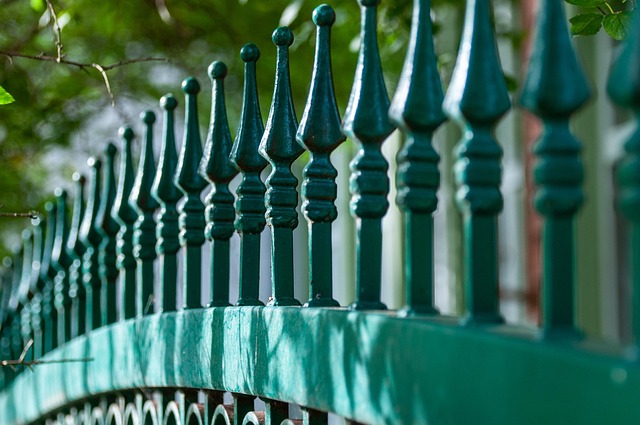Coastal areas present unique challenges for fencing due to harsh weather conditions and salt exposure. This article explores durable wooden fencing as a strong and aesthetically pleasing solution. We delve into understanding specific coastal fencing needs, highlighting the benefits of long-lasting wood types, and offering installation and maintenance guidance. Learn how to enhance your coastal property with this natural and robust fencing option.
- Understanding Coastal Fencing Challenges
- Benefits of Durable Wooden Fencing
- Choosing the Right Wood Species
- Installation Techniques for Coastlines
- Maintenance Tips for Longevity
- Enhancing Coastal Property with Wooden Fences
Understanding Coastal Fencing Challenges
Coastal areas present unique challenges when it comes to fencing due to their harsh, often unpredictable environments. Saltwater corrosion, strong winds, and frequent rainfall can take a toll on traditional fencing materials. Wooden fences, in particular, must withstand these elements to maintain their structural integrity and aesthetic appeal over time. The primary challenge is to find a material that offers both durability and longevity while withstanding the relentless coastal conditions.
Traditional wooden fences may rot or warp due to prolonged exposure to moisture, leading to frequent replacements and increased maintenance costs. For areas prone to strong winds and storms, fences must be robust enough to resist high-speed debris and extreme weather conditions. Choosing the right type of wood and proper treatment methods is essential to mitigate these challenges. Durable, water-resistant woods like treated cedar or pressure-processed pine can offer solutions, but finding a fencing material that seamlessly blends strength, longevity, and aesthetic appeal remains a key consideration for coastal homeowners and developers.
Benefits of Durable Wooden Fencing
Durable wooden fencing offers numerous advantages for coastal areas. Firstly, it provides natural aesthetics and can complement the surrounding environment. Secondly, wood is a renewable resource, making it an eco-friendly choice compared to other materials that may contribute to environmental degradation. Additionally, well-maintained wooden fences are highly durable and can withstand harsh weather conditions, including strong winds and salty air, which are common in coastal regions.
These fences also serve as effective barriers against intruders, offering both security and privacy for homeowners. Moreover, they can be customized with various styles, colors, and finishes to match individual preferences, ensuring that each property has a unique look while still aligning with local building codes and regulations.
Choosing the Right Wood Species
When selecting wood for coastal fencing, understanding the unique challenges posed by salt air and moisture is key. Not all woods are created equal in this regard. Certain species are naturally more resistant to rot, decay, and insect infestation, making them ideal choices for enduring harsh coastal environments. For instance, redwood and cedar are renowned for their exceptional durability due to high natural oil content that repels water and inhibits fungal growth.
Additionally, exotic woods like ipe or teak offer outstanding strength and longevity. These tropical hardwoods have dense structures that make them heavy-duty and resistant to rot, making them excellent options for coastal fencing that requires minimal maintenance and a long lifespan. Consider your local climate, available budget, and desired aesthetic when narrowing down the best wood species for your specific coastal fencing project.
Installation Techniques for Coastlines
When installing wooden fencing in coastal areas, special consideration must be given to the unique challenges presented by the environment. One effective technique is to use a mix of vertical and horizontal posts set in concrete foundations. This method provides added stability against strong winds and the constant exposure to salt air. The use of pressure-treated wood further enhances durability, ensuring the fence can withstand harsh coastal conditions without compromising integrity.
Additionally, for an extra layer of protection, consider applying a high-quality waterproof sealant or coating. This step is crucial as it shields the wood from moisture absorption, which could lead to rot and deterioration. Regular maintenance, including cleaning and reapplying treatments, is essential to keep the fence in top condition, ensuring its longevity despite coastal challenges.
Maintenance Tips for Longevity
To ensure your durable wooden fencing stands the test of time, especially in coastal environments with varying weather conditions, proper maintenance is key. Regular cleaning is essential to remove salt spray and other deposits that can weaken the wood over time. Use a soft brush or cloth to gently scrub the fence with a mild detergent, then rinse thoroughly with clean water.
Inspecting your fence for any signs of damage, rot, or pest infestation should be part of your routine maintenance. Address issues promptly to prevent further complications. Apply a fresh coat of weather-resistant sealant annually to protect the wood from moisture and UV rays, preserving its beauty and structural integrity.
Enhancing Coastal Property with Wooden Fences
Wooden fences have long been a popular choice for property owners, but they offer especially compelling benefits for those in coastal areas. These natural barriers not only provide privacy and security but also serve as an attractive design element that can enhance the overall aesthetic of a coastal property. With proper maintenance, durable wooden fences can withstand the harsh marine environment, including salty air and frequent exposure to moisture.
Choosing the right type of wood is key for coastal applications. Treatments like pressure-treating or using naturally rot-resistant woods like cedar or redwood ensure longevity. These enhancements not only protect the fence from decay but also preserve its natural beauty, allowing it to complement and elevate the ambiance of beachfront homes or properties near the shore.
